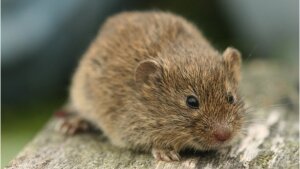Overview field station
Image: Stefan HalleThe field station is located about 5 km from the city centre on the plateau and serves as the basis for a number of experimental field experiments. Centrepiece of the unit, also known as ”mouse farm” in Jena, are the 6 vole enclosures (50 x 50 m each) that are in operation since the year 2000. By opening gates the enclosures can be connected in different combinations (6 x 1, 3 x 2, 2 x 3, 1 x 6). This allows to variably adapt to the particular requirements of an experiment, so the setup may be seen as a large field lab.
The whole unit is surrounded by a 2 m high wire-mesh fence to lock out mammalian predators (weasels and stoats in particular, but also cats and foxes). The enclosures are not covered, so avian predators (raptors and owls) have free access. This is required in order to preserve the natural predator avoidance behaviour of the voles. However, special installations prevent predators from an extensive success rate by easy sit-and-wait hunting.
Common vole (Micotus arvalis)
Image: Stefan HalleWe use the common vole (Micotus arvalis) as experimental species. Its general biology is well-known, it is easy to keep and has a high trapability. With that it is an ideal model organism for experimental studies. The sown meadow vegetation, which is maintained as identical as possible in the 6 enclosures, is the natural habitat of common voles and provides food as well as cover. Each enclosure is large enough to bear a self-sustaining population with a largely natural social structure. Populations are managed such that the seasonal density changes are as close to the natural situation as possible. Apart from that it is easy to manipulate the meadow vegetation with a mower to establish for instance corridors or to fragment the habitat.
Over the years larger study series were conducted on dispersal behaviour, predator/prey interactions and landscape ecology. Common features of all experiments are the combination of population dynamics and spatio/temporal behaviour as well as the question how they are affected by external conditions. So the studies at Remderoda are experiments on the population level, which are as close as possible to the open field conditions, but are under much better control and allow rigorous statistical data treatment due to replication.
